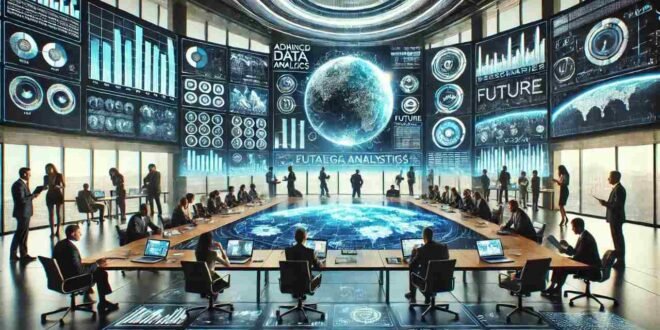Businesses, governments, and organizations face numerous uncertainties and complexities in today’s rapidly changing world. Innovative methodologies are needed to overcome these challenges. Backcasting is one such approach that is gaining popularity. This article comprehensively analyzes what a back-casting room is, its significance, components, applications, benefits, challenges, and future trends.
What is backcasting?
In essence, backcasting is a method of identifying steps needed to achieve a desired future that begins with a vision of a desired future. Back-casting involves imagining the future and assessing whether achieving it is feasible. Forecasting uses historical data to predict future trends. In addition to business strategy, environmental sustainability, and policy development, this approach originated in urban planning.
The Purpose of a Back Casting Room
Backcasting rooms facilitate strategic decision-making by envisioning multiple future scenarios and identifying pathways to achieve desired outcomes. By integrating historical data, current trends, expert opinions, and stakeholder insights, back-casting enables organizations to anticipate potential challenges, opportunities, and disruptions. Additionally, it helps formulate adaptive strategies for navigation.
Components of a Back Casting Room
- Data collection
During the initial data collection phase, relevant historical data, current trends, and expert forecasts are collected. Scenario building and strategic analysis are based on this data. It is common to use advanced data analytics techniques to identify patterns, drivers, and uncertainties that may influence future outcomes.
- Scenario building
In backcasting, scenario building is a crucial step. Multiple plausible future scenarios are created based on different assumptions, variables, and uncertainties. Stakeholders and subject matter experts contribute to the development of these scenarios. A range of potential futures and their implications are explored through scenario planning workshops and modeling techniques.
- Analysis and evaluation
When developed, scenarios are rigorously analyzed and evaluated to assess their feasibility, risks, and opportunities. This analysis identifies key drivers, uncertainties, and critical decision points. A decision-maker can prioritize actions and allocate resources effectively by analyzing the potential impacts of each scenario on the organization’s goals and objectives.
- Strategy formulation
Organizations formulate strategies and action plans based on the analysis of potential scenarios. In response to changing circumstances, these strategies are adaptable and flexible. It is important to align organizational goals with external trends, market dynamics, and stakeholder expectations to formulate an effective strategy.
Applications of backcasting
A wide range of industries and sectors use backcasting:
- Backcasting is used in environmental planning to visualize sustainable futures and develop strategies to mitigate climate change, conserve natural resources, and promote ecological stability.
- Back-casting helps organizations anticipate market trends, competitive threats, and technological disruptions in business. Strategic decision-making, innovation strategies, and long-term planning are informed by it.
- Backcasting assists governments and policymakers in setting ambitious targets, designing effective policies, and fostering inclusive growth. By doing so, proactive policy interventions can be implemented to address societal challenges and promote social equity.
The benefits of a backcasting room
Organizations can benefit from adopting backcasting:
- Enhanced strategic foresight and preparedness: Organizations gain a deeper understanding of potential risks and opportunities by imagining multiple future scenarios. Doing this lets us make proactive decisions and prepare for the future.
- Backcasting assists organizations in identifying and mitigating risks before they manifest. Organizations can navigate uncertainty more effectively if they anticipate disruptions and build resilience.
- Enhanced Innovation and Adaptability: Backcasting encourages organizations to think creatively and innovatively about the future. Organizations can adapt and thrive in dynamic environments by exploring alternative futures and challenging assumptions.
Challenges and limitations
Backcasting has numerous benefits but also challenges and limitations:
- It is important to remember the limitations and uncertainties associated with data when backcasting. It is possible, however, for data to be incomplete, inaccurate, or interpreted in an unreliable manner, resulting in uncertainties when developing scenarios.
- One needs a deep understanding of complex systems, interconnected variables, and dynamic relationships to develop plausible future scenarios. A scenario’s relevance and credibility depend on the balance between simplicity and complexity.
- Implementing backcast initiatives may encounter resistance from stakeholders who are reluctant to challenge existing paradigms or embrace uncertainty. Communicating effectively, leading effectively, and changing the organizational culture are key to overcoming inertia and fostering buy-in.
Future Trends in Backcasting
Several trends shape the future of backcasting:
- Advancements in Technology and Data Analytics: Emerging technologies such as artificial intelligence, machine learning, and big data analytics enhance backcasting capabilities. These tools enable organizations to analyze vast amounts of data, uncover hidden insights, and generate more accurate predictions.
- Organizations can automate scenario generation, analyze complex patterns, and simulate dynamic systems by integrating back-casting with artificial intelligence and machine learning algorithms. Through this integration, decision support capabilities are enhanced, and strategic planning processes are accelerated.
- Trends in Scenario Planning Methodologies: New approaches and methodologies are emerging to improve back-casting effectiveness. Participants can plan scenarios through participatory, adaptive, and probabilistic scenarios. Strategic planning is more robust and resilient by incorporating diverse perspectives, uncertainties, and feedback loops.
Conclusion
A backcasting room is valuable for organizations seeking to navigate uncertainty, anticipate change, and shape the future. In the face of uncertainty, back-casting enables proactive decision-making by integrating historical data, scenario-building techniques, and strategic analysis. Back-casting is an invaluable tool for strategic planning and foresight despite its challenges and limitations.
Using back-casting methodologies, organizations can better prepare for the future, adapt to changing circumstances, and achieve long-term goals. Back-casting is a powerful tool for envisioning and realizing a desirable future, whether in environmental planning, business strategy, or policy development.
Frequently Asked Questions (FAQs).
- What is backcasting?
Backcasting is a strategic planning methodology that involves envisioning a desired future and then working backward to identify the steps necessary to achieve that future.
- How does backcasting differ from traditional forecasting?
While traditional forecasting predicts future outcomes based on current trends and data, back-casting starts with a future goal and works backward to determine the actions and strategies required to reach that goal.
- What are the main applications of backcasting?
Backcasting is used in environmental planning and sustainability, business and strategic management, and policy development and governance. It is used to envision desirable futures and develop strategies to achieve them.
- What are the benefits of backcasting?
Key benefits include:
- Enhanced strategic foresight and preparedness.
- Improved risk management and resilience.
- Increased innovation and adaptability.
- What are the challenges and limitations of backcasting?
Challenges include data limitations and uncertainties, scenario development complexity, and resistance to change and implementation barriers.
- How can technology advancements enhance back-casting?
Emerging technologies such as artificial intelligence, machine learning, and big data analytics can improve back-casting capabilities by enabling more accurate scenario generation and strategic analysis.
- Can backcasting be integrated with other strategic planning methodologies?
Back-casting can be integrated with participatory, adaptive, and probabilistic scenario planning to enhance effectiveness.
- Why is stakeholder buy-in critical for back-casting initiatives?
Stakeholder buy-in is crucial because it helps overcome resistance to change and supports implementing back-casting strategies and actions.
- How does back-casting contribute to risk management?
By envisioning multiple future scenarios, back-casting helps organizations identify and mitigate potential risks before they manifest, enhancing resilience.
- What is the future of back-casting?
The future of back-casting is being shaped by technological advancements, integration with AI and machine learning, and the emergence of new scenario-planning methodologies. As a result, it becomes an increasingly powerful tool for strategic planning and foresight.
Key benefits include:
- Enhanced strategic foresight and preparedness.
- Improved risk management and resilience.
- Increased innovation and adaptability.
- What are the challenges and limitations of backcasting?
Challenges include data limitations and uncertainties, scenario development complexity, and resistance to change and implementation barriers.
- How can technology advancements enhance back-casting?
Emerging technologies such as artificial intelligence, machine learning, and big data analytics can improve back-casting capabilities by enabling more accurate scenario generation and strategic analysis.
- Can back-casting be integrated with other strategic planning methodologies?
To enhance effectiveness, backcasting can be integrated with participatory, adaptive, and probabilistic scenario planning methodologies.
- Why is stakeholder buy-in critical for back-casting initiatives?
Stakeholder buy-in is crucial because it helps overcome resistance to change and supports implementing back-casting strategies and actions.
- How does back-casting contribute to risk management?
By envisioning multiple future scenarios, back-casting helps organizations identify and mitigate potential risks before they manifest, enhancing resilience.
- What is the future of backcasting?
The future of backcasting is being shaped by technological advancements, integration with AI and machine learning, and the emergence of new scenario-planning methodologies. In this way, it becomes an increasingly powerful tool for strategic planning and foresight.
 Nt Design
Nt Design



